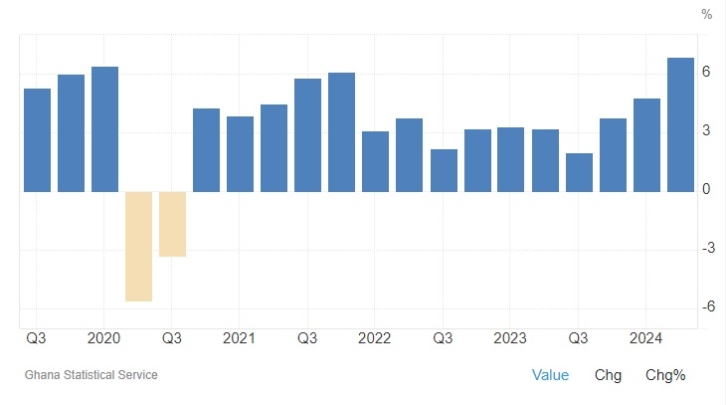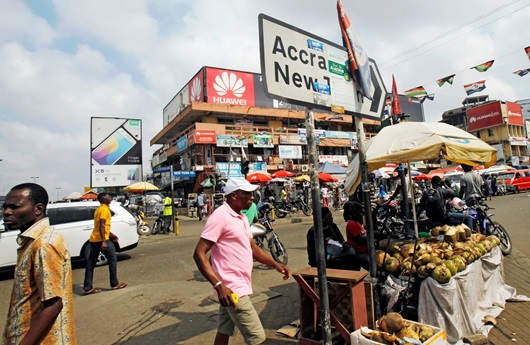Ghana’s economy experienced its fastest growth in five years, expanding by 6.9 percent in the second quarter of 2024.
This was announced by Government Statistician Samuel Kobina Annim during the release of the latest Gross Domestic Product (GDP) figures today in Accra.
The growth, which covers the period from April to June, marks an improvement compared to the revised 4.8 percent recorded in the first quarter of the year.

The strong economic performance is largely driven by several key sectors. Mining and quarrying, crops, information and communication, construction, and manufacturing were the main contributors to the growth in the second quarter. However, certain subsectors, such as forestry and logging, water supply, and other personal service activities, faced declines during this period.
In terms of GDP without oil and gas, growth was even higher, reaching 7.0 percent compared to 3.1 percent in the same quarter of the previous year. The seasonally adjusted quarter-on-quarter GDP growth rate also improved, standing at 1.6 percent in Q2, up from 1.2 percent in the first quarter.
The services sector continued to be the largest contributor to Ghana's economy, accounting for 44.2 percent of GDP at basic prices in the second quarter.
Meanwhile, the industry sector recorded the highest year-on-year growth at 9.3 percent, spurred by a 14.8 percent expansion in mining and quarrying. In contrast, water supply, sewerage, and waste management activities saw a contraction of 9.6 percent.
The information and communication subsector was a standout performer within the services sector, posting a 12.8 percent year-on-year growth, while other personal service activities contracted by 3.1 percent. In agriculture, the crops subsector expanded by 6.4 percent, but the forestry and logging subsector recorded a 5.2 percent decline.
From an expenditure perspective, household consumption was the main driver of growth, increasing by 8.5 percent. However, this was partly offset by a 3.1 percent decline in gross capital formation and a sharp 59.2 percent drop in net exports.





